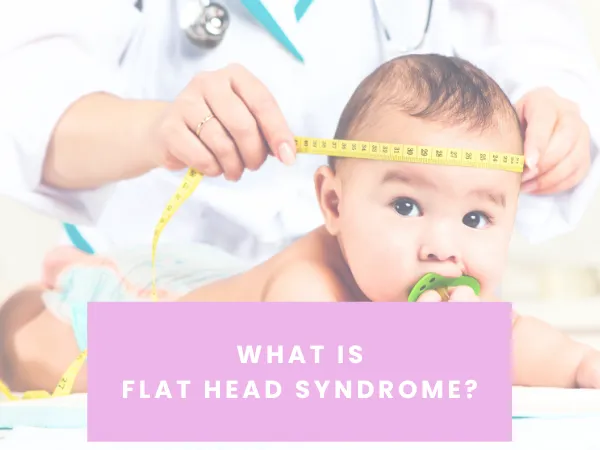Blog

What Is Flat Head Syndrome?
Introduction:
Hey, mamas! If you've ever come across the term "Flat Head Syndrome" and found yourself wondering about its implications, you're in the right place. In this blog post, we will take a look at it and explore how it can affect your precious little one. Knowledge is indeed power, and being well-informed about this condition is the first step towards effectively addressing it.

What Is Flat Head Syndrome in Babies?
Medically known as plagiocephaly, brachycephaly, or dolichocephaly, it is a genuine concern for many parents. It manifests when a baby's head develops a flat spot or becomes misshapen due to various factors. Recognizing the impact on both the cosmetic and developmental aspects of your baby's well-being is crucial.
This occurs when a baby's head develops a flat area. The prevalence has increased due to the ‘Back-To-Sleep-Campaign’ and the recommendation for babies to sleep on their backs, coupled with the use of various baby devices that often keep them on their backs during the day. Factors such as gravity and the softness of a baby's bones contribute to this condition.
What are the Types of Flat Head Syndrome?
Plagiocephaly (flattening on one side), brachycephaly (flattening at the back), and dolichocephaly or scaphocephaly (flattening along the sides) are the different types of head shape flatness.
What are the causes?
Explore the various causes, including prolonged periods in the same position, neck muscle tightness, conditions like torticollis, in utero positioning, prematurity, and other factors impacting your baby's head shape.
How To Prevent?
Key to preventing positional flat heads is intentional care. Learn about practices like tummy time, changing your baby's position regularly, giving your baby lots of time for unrestricted movement and play (ideally on the floor), baby-wearing, and bodywork to promote a healthy head shape.
What Are The Treatments?
There are various treatment options for this, from preventive measures to addressing moderate to severe cases. All of the same preventative measures that I just mentioned are applicable, along with bodywork to release any tightness, compression and even cranial bone placement.
For more moderate to severe cases there is definitely a role for role of helmets and cranial orthosis, and the technology to make these has increased tremendously over the past few years so they are not nearly as cumbersome to wear as they used to be.
In conclusion, as a caring parent, your proactive approach to understanding and addressing Flat Head Syndrome can make a significant difference in your baby's well-being. Stay informed, take preventive measures, and seek professional guidance for the best care possible.
Check my latest VIDEO about this topic and explore ways how you can prevent this from happening to your babies.
If you're looking for in-depth guidance on your baby’s body tightness check out my Baby Body Bliss: Unveiling Comfort and Ease - A Parent's Guide to Assessing Body Tension. This guide is full of information, aimed at empowering you to recognize and address any potential body tightness or tension in your baby.
You can also join a group of other Mamas just like you in my free group Sleep Deprived Mama’s Holistic + Heart Centered Support. Let’s support each other! I’m here for you, mamas!

